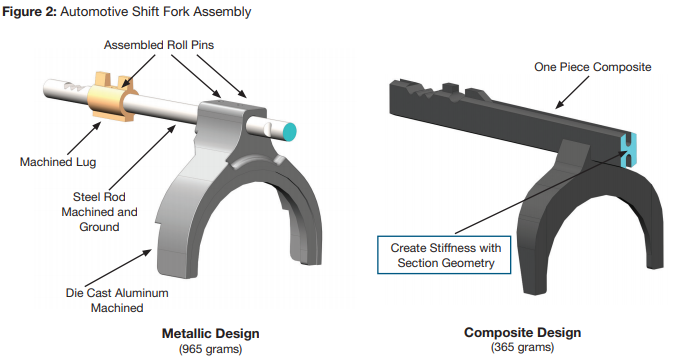

A Look Ahead – Legislative and Regulatory Efforts in 2020
From ACMA’s perch in Washington, D.C., we are the eyes, ears and voice of the composites industry. As your association, we work aggressively to ensure that composites are a part of the national policy dialogue. We all know that 2020 is going to be a wild year in the public policy realm. Presidential politics are already dominating news cycles. Control of the U.S. House and Senate are both up for grabs, as well as many governorships and state legislatures that are poised for shifts. ACMA’s job is to make sense of it all. It all may seem fraught with chaos, but we see opportunities to achieve key legislative and regulatory outcomes that will benefit our industry in the long term. Infrastructure is one such area and remains a top priority. America’s bridges, water systems, dams and electric grids are woefully inadequate, and our industry is uniquely positioned to solve the problem. One barrier we’ve identified is design data and standards, and we are on track to clear it through legislation authorizing the National Institute for Standards and Technology to launch a multimillion-dollar effort to aggregate and validate existing standards and develop models to better measure durability of composite infrastructure products. By making composites easier for the design community to understand, and certify to standards, we increase our selling power exponentially. We also seek to create immediate opportunities for deployment. ACMA is a leading voice championing legislation, known as the IMAGINE Act, that would direct hundreds of millions of dollars for construction of bridge and water/wastewater infrastructure with innovative material and technologies like composites. Because the current legislation expires in 2020, Congress must pass highway and water infrastructure bills in 2020. These large legislative packages provide an opportunity for ACMA to lobby for inclusion of our industry priorities. Transportation is another core area of our legislative program. ACMA is a leading voice championing the Aeronautics Innovation Act, which enables industry collaboration with NASA to further develop composite manufacturing and material technologies for next-generation aerospace applications. Congress will complete a NASA reauthorization process next year, creating an avenue to see the Aeronautics Innovation Act signed into law. Similarly, ACMA is pressing for passage of legislation known as the Vehicle Innovation Act, which would reform Department of Energy vehicle research programs to focus on commercializable solutions and to fully include the automotive supply chain in their efforts. Like the aeronautics bill, this effort would also address scalability concerns for composites to meet the demands of high volume automotive production. These two bills are essential because not only do they create immediate opportunities in high-growth markets, but also help our industry overcome technical barriers to allow us to better compete in virtually every market. While we look at these new opportunities on the horizon, we must be equally mindful of preserving existing industry vitality. ACMA has long had a robust regulatory and compliance program where we work to help our industry navigate complex federal, state and local rules, as well as weigh in with agencies to ensure composites are appropriately understood and regulations are not overly burdensome. ACMA will continue watching EPA’s Toxic Substances Control Act (TSCA) program as it evaluates the health risks of formaldehyde and other substances. While formaldehyde is not widely used in the composites industry, EPA’s review of the health effects data for this substance may provide important indications of how the agency will approach styrene, which is on the priority list for assessment by this program. In 2020, we expect resolution of claims by Bayer and other organizations that California EPA erred when classifying the herbicide glyphosate as a carcinogen under Prop 65. If the court decides in favor of the plaintiffs, this may support the composites industry’s attempt to settle enforcement related to emissions of styrene by several California composites manufacturers. The draft of the 2022 Edition of NFPA 400 will become available for review this year, allowing ACMA to evaluate the impact of proposed new fire code provisions for storage and use of organic peroxides. Especially important will be an assessment of proposed requirements for storage of smaller quantities of organic peroxides in what the code calls “control areas”. EPA is expected to release its final rule establishing risk and technology review (RTR) standards for composites manufacturing operations. These are controls or practices the agency determines are necessary beyond those required under the 2003 MACT standard necessary to protect public health. In the proposed composites manufacturing RTR standard issued in early 2019, EPA did not determine that there is a public health risk caused by composites manufacturing emissions necessitating implementation of new control requirements. Whether on the Hill or in regulatory agencies, what drives our agenda is member involvement. If you are involved in the infrastructure market, your company has everything to gain by attending our 2020 Infrastructure Day, Feb. 12-13 in Washington, D.C. We bring you personal meetings with members of Congress to lobby for these key issues, as well as your company’s other priorities. We also provide insider presentations from senior government officials. Early 2020 is an essential time to engage, and Congress needs to hear from you. Participating in ACMA’s Public Policy Steering Committee and Regulatory Steering Committee are also crucial ways to engage. Our agenda is member-driven, so we need to hear from you on the issues that count. By pooling our efforts and working together, we can ensure composites are the go-to solution of the future.

SUBSCRIBE TO CM MAGAZINE
Composites Manufacturing Magazine is the official publication of the American Composites Manufacturers Association. Subscribe to get a free annual subscription to Composites Manufacturing Magazine and receive composites industry insights you can’t get anywhere else.





